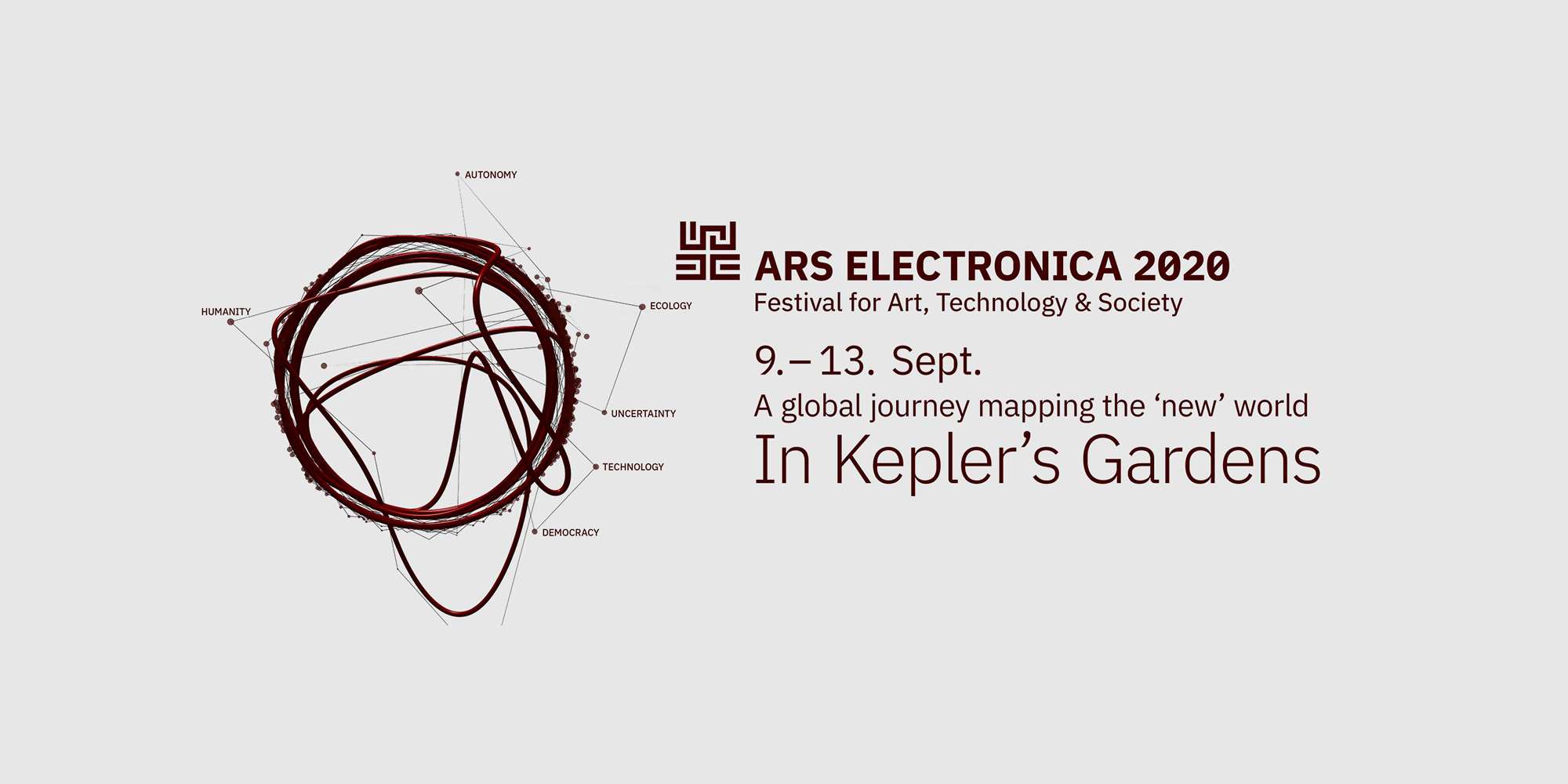Reality
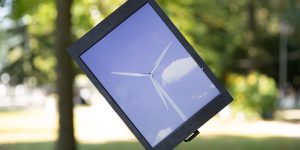
Derotation
Domas Schwarz (AT)
Die Video Installation “Derotation” zeigt ein Video eines stetig rotierenden Windrades auf einem Bildschirm, der sich in derselben Geschwindigkeit in die entgegengesetzte Richtung dreht. Die Drehung des Windrades, die der Stromerzeugung dient, wird visuell von einem Motor gestoppt, der dafür bekannt ist, Strom zu verbrauchen. Ein weiteres Beispiel für Ressourcenverschwendung in der Medienkunst?
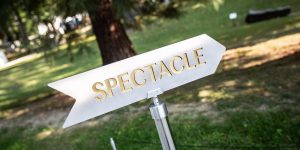
God is Dog spelled Backwards
Mathieu Zurstrassen (BE)
"God is dog spelled backwards" ist ein kinetisches 360°-Kunstwerk und eine Hommage an Guy Debords La société du Spectacle, das 1967 erstmals veröffentlicht wurde.
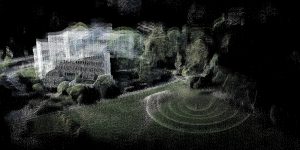
site-inflexion
Fulldome / VR & AR Lab
Die immersive Installation site-inflexion lädt zur Teilnahme an einer ortsspezifischen virtuellen und akustischen Reise ein. Die Szenen- und Klanglandschaften des JKU-Campus sind die Hauptakteure der Arbeit, die auf Johannes Keplers Tätigkeit als Landschaftsmathematiker anspielen. Eine lasergescannte topographische Aufnahme von Keplers Gärten wird zu einer audiovisuellen Umgebung, die durch die alltäglichen Geräusche, die sie bewohnen, transformiert wird.
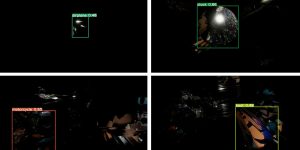
Cross Perception - work in progress
Fulldome / VR & AR Lab
Ein grenzenloser Raum. Alles bewegt sich. Licht, Formen und Farben. Mensch und Maschine lassen ihren Blick schweifen und versuchen, etwas zu erkennen. Der Mensch sucht nach Orientierung, die Maschine rechnet.

Future Room and Liminal Spaces (re-edited) 360˚ film screening
Fulldome / VR & AR Lab
Das Fulldome-Programm der Abteilung für Digitale Kunst der Universität für angewandte Kunst Wien präsentiert experimentelle immersive Arbeiten, Kooperationen der Abteilung mit dem Science Visualization Lab der Universität sowie mit der Trans-Media Academie Hellerau und der transdisziplinären Performancegruppe kondition pluriel. Future Room und Liminal Spaces (re-edited) zeigen das künstlerische Potential von Fulldome, ebenso wie die 360˚ -Filmvorführung mit einer Auswahl von Werken von Forschern, Lehrern und Studenten.

AUGENSCHEIN
Sylvia Eckermann (AT), Stieglerhaus
The Ars Electronica Garden St. Stefan ob Stainz takes us on a journey to Sylvia Eckermann’s public art project AUGENSCHEIN. AUGENSCHEIN takes the eye as a symbol for how our society relates to vision and visualisation, in its encouraging and more dangerous aspects.
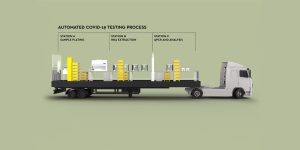
CONTAIN - Mobile COVID19 Emergency Testing Facilities
Open Cell (UK)
CONTAIN units are rapidly deployable COVID-19 testing laboratories housed in shipping containers. The design allows transportation to any location through standard shipping services. Automated RT-qPCR protocols can deliver 2,400 tests per unit in 24 hours.
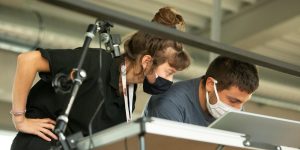
Performance Workshop: Enacting Innovation
Judith Igelsböck (AT), Friedrich Kirschner (DE), Sarah Buser (CH), Mónica Rikić (ES), Leoni Voegelin (CH), Tomás Montes Massa (CL), Laura Zoelzer (DE)
Die partizipative Inszenierung "Enacting Innovation" setzt sich mit dem sozio-materiellen Gefüge auseinander, das gegenwärtige Innovationspraktiken umgibt.
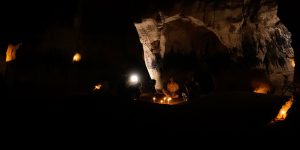
Finding Amir / From Jerusalem to the Judaea Desert, Israel
Musrara, the Naggar School of Art and Society (IL)
The day that Covid19 sent us all into isolation, Amir Meir, a member of the Musrara Sonic Art Research Group׳ announced he was going to spend the quarantine in one of the many caves in the Judean Desert near Jerusalem and disappeared ever since. With the aid of space and sound illusions practices, the film "Finding Amir" tries to touch on the in-depth questions about the imagined realities that lie behind the walls of digital and symbolic representation.
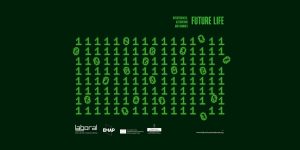
Future Life. Interferences, Alterations, Changes.
Laboral Centro de Arte y Creación Industrial (ES)
The artists in this exhibition work with blood and chlorophyll to investigate the connections between human and plant life. They use microbial cultures, robotic clams and sensors to demonstrate the contamination of the oceans; or apply AI algorithms so that something as innocent as a flower can visualize financial speculation. They also engage with the new icons, practices and virtual devices that define the increasingly polarized and radicalized scenarios of online social and cultural ecosystems.

The Night Sky: Unveiling What Only the Dark Reveals
Open Science Hub - Portugal, Municipality of Figueira de Castelo Rodrigo (PT)
Open Science Hub - Portugal (OSHub-PT; Plataforma de Ciência Aberta) is a social innovation project that brings together science, technology and innovation with the daily life of local and regional communities, supporting schools and societal actors in tackling local relevant challenges. It is a project of the Municipality of Figueira de Castelo Rodrigo, in collaboration with Leiden University.
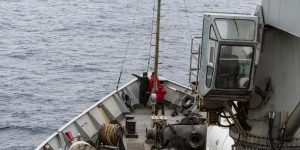
Achaeoscillator_Towards incorporeal forms of sensing listening and gaze
Terra Australis Ignota Research Group (CL) with Santiago Museum of Contemporary Art (MAC)
Achæoscillator displays the drastic weather conditions of the southernmost island in the world on a virtualized representation of the end/beginning of the Americas. A one-person experience, where the research presents traces and connections between the ancestors of the Yagán community, the Kawesqar and Selk’nam and the Antarctic, Scotia and South America continental plates, offering an inestimable and uncontrollable source of Gaia's power.
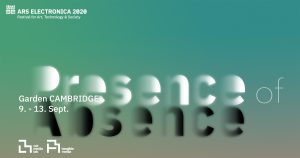
Presence of Absence
Tangible Media Group | MIT Media Lab (US)
The Cambridge Garden by Tangible Media Group for Ars Electronica Festival 2020, we will be featuring selected projects that materialize the Presence of Absence. Our garden introduces the latest in Tangible Telepresence research to engage people who collaborate across time and space with synchronized tangibles. We also feature a variety of dynamic computational materials we call Radical Atoms that foster a new form of human-material interactions.
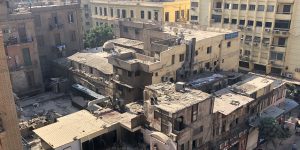
WE ARE DATA
Cairotronica (EG)
WE ARE DATA came as a response to a rising responsibility placed on "technology" as a tool which facilitates inclusive development and solutions to many challenges currently facing cities like Cairo. This, in turn, raises questions about security, privacy, accountability, bias, agency, transparency, and ethics among many others. Through the We Are Data fellowship, we wanted to encourage dialogue on the complexity of technology and data from the perspective of 6 Egyptian artists.

Real Feelings. Emotion and Technology
HeK (House of Electronic Arts Basel) (CH)
Emotions are at the core of human experience. They influence every aspect of our lives and shape our social behaviour. In the 21st century, technology has started to engage with emotions like never before. The international group show at HeK presents works by 20 artists ―in mediums ranging from artificial intelligence, interactive installations, robotics and biometrics to gaming, video installations and virtual reality by 20 artists― that explore how technology can assess and trigger our emotions.
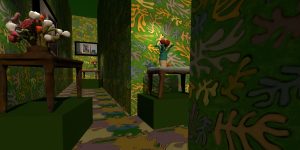
Claudia Hart’s The Ruins
bitforms gallery, New York (US)
The Ruins is an exhibition that implements still lifes to contemplate the canons of a patriarchal Western civilization: modernist paintings and manifestos of political utopias. Join Hart in an intimate video profile as she discusses the works as meditations on a world in crisis, speaking to an unstable present experienced through the possibility of simulation-technologies that use data to model the crystallization of past, future, and present into a perpetual now.

Galerie Charlot: 10 Year Anniversary Exhibition
Galerie Charlot (FR / IS)
The Paris and Tel Aviv-based Galerie Charlot celebrates its tenth year with an anniversary exhibition in Paris. The curated show features currently represented artists, showing a diversity of approaches to media over several generations.
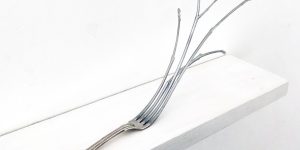
Markus Hofer “Visuelle Hypothese” – an exhibition @ AAA project space of MAM Mario Mauroner Contemporary Art Vienna
MAM Mario Mauroner Contemporary Art Vienna (AT)
The focus of Markus Hofer’s exhibition “Visuelle Hypothese” is the process of visual perception, in which our brain is supplied with information about objects visible in space through the retinal and optic nerve, and compares them objects to remembered and memorized objects. It is only by matching our memory to what we have seen that we can recognize an object and determine its function.
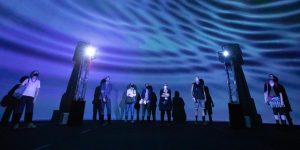
Fulldome / VR & AR Lab
Martin Kusch, Director ǀ Fulldome / VR & AR Lab, Ruth Schnell, Head Department of Digital Arts, University of Applied Arts Vienna (AT)
Das Fulldome/VR & AR Lab an der Abteilung für Digitale Kunst der Universität für angewandte Kunst Wien ist eine Plattform für neue kreative Prozesse mit einem Schwerpunkt auf digitalen Anwendungen für Fulldome-, VR- und AR-Umgebungen. Experimentelle Forschungsprojekte werden im interdisziplinären Austausch zwischen Studierenden, Lehrenden und Forschern durchgeführt, die an der Entwicklung neuer künstlerischer Grammatiken arbeiten und dabei den Einfluss immersiver Geräte hinterfragen. Der ‘Dome’ der Ars Electronica ist Teil der Infrastruktur des Labors.
